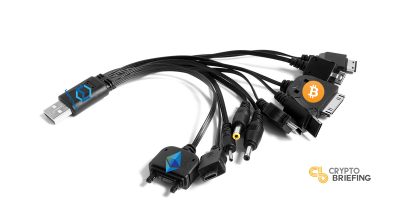Bitcoin Meets Ethereum: Wanchain Begins Blockchain Unification

Share this article
Ever find the blockchain space a bit confusing? The ecosystem has gotten a little out of hand, with thousands of tokens on hundreds of blockchains. You can send an ERC-20 token to any Ethereum wallet, but don’t you dare mix them up with NEP-5 tokens. Tron and Tezos have their own chains, and their own ICOs. And God help you if you send a bitcoin to the wrong kind of Bitcoin address.
Blockchain protocols are more numerous than the different kinds of electric sockets, but now there’s a universal adapter. Wanchain (WAN) is on a mission to unite the cryptos, allowing traders to seamlessly exchange tokens from one protocol to another. Today the project announced the release of “Wanchain 3.0,” providing interoperability between Bitcoin, Ethereum and ERC-20 tokens.
The announcement concludes the alpha and beta trials for Wanchain 3.0, upon which Crypto Briefing has previously reported.
The full launch will also allow Wanchain to replicate Ethereum dApps, allowing inter-blockchain interactions with smart contracts like Maker/Dai, 0x tokens and decentralized exchanges.
“Given the massive need for interoperability,” says Wanchain VP of Global Communications Oliver Birch, in an email, “we believe this is one of the most monumental advancements crypto has seen to date. This lays the foundation for a crypto industry where assets and value can be transferred cross-chain in a decentralized manner in situations such as DEXs and cross-chain dApps.”
In order to use the new protocol, traders will need to move ETH or BTC to a smart contract address, linked with the WAN blockchain. The coins are then trustlessly exchanged for proxy tokens, denominated WETH or WBTC, which can be readily traded or used in Wanchain smart contracts. At the end of the interaction, users can redeem the tokens as easily as they got them.
The New (Decentralized) WBTC
This isn’t the first token under the WBTC ticker. Earlier this year, Crypto Briefing reported on “wrapped” Bitcoin, an ERC-20 token backed by bitcoin collateral. But despite a shared nickname, the two could not be more different.
“There is a world of difference between WBTC on Ethereum and the one being implemented on Wanchain,” explains Wanchain’s technical strategist Johann Eid. “Wanchain aims to implement a fully decentralized solution to solve the cross-chain transfer of value challenge, while WBTC on Ethereum is currently operating more like a traditional banking/custodial solution.”
In other words, he suggested, “wrapped BTC” is more of a Bitcoin-backed Tether than a decentralized solution, one that depends on the trustworthiness of a single custodian, based and bound by US laws.
Wanchain’s WBTC isn’t quite perfect either, at least not yet. The blockchain is still permission-based, Eid acknowledged, but it’s moving closer to full decentralization.
Every Blockchain from Ada to Zilliqa
But the show’s not over yet, and the project has no plans to stop. As Eid explained over email, the Wanchain protocol hopes to eventually unite every major blockchain.
“As long as any given blockchain is able to use our public/private key scheme,” Eid explains, “we are able to integrate said blockchain with a process that we’re aiming to be as universal as possible in the future.” Ripple, Stellar and EOS are already under consideration.
That could make things a lot simpler, so the dabbling investor won’t need six different desktop wallets. With the introduction of a universal blockchain adapter, crypto might become easy enough to actually use.
The author is invested in Bitcoin and Ethereum, which are mentioned in this article.
Crypto Briefing’s CEO is an advisor to Wanchain, but was not involved in the production of this article.
